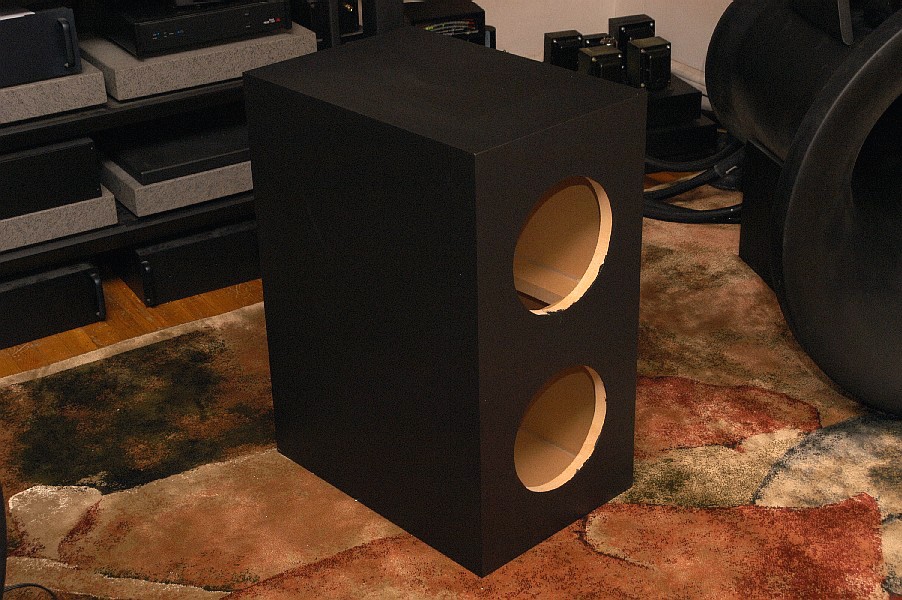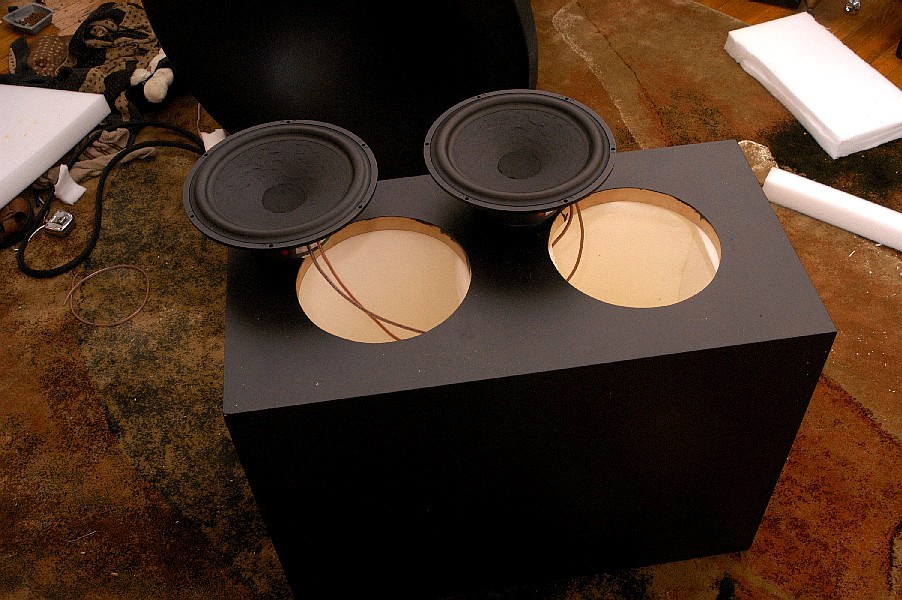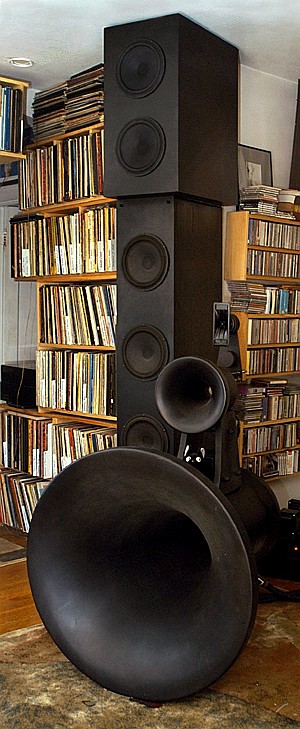Rerurn to Romy the Cat's Site
In the Forum: Horn-Loaded Speakers
In the Thread: Macondo Alternation. Extending the LF line-array
Post Subject: Macondo Alternation. Extending the LF line-arrayPosted by Romy the Cat on: 10/29/2005
buy naltrexone no prescription
buy low dose naltrexone online
read Recently Macondo was altered and converted into… nope, not into a Super Macondo :-) but in a “Larger Macondo”. The Super Macondo it will be when I resolved how to implement time delays along with a low pass flirter at midbass horn, that would enable me to do my 15/40,151 40-50Hz 1-octave horn, complimenting my current upperbass horn.
So far I decided to alter my LF channel by adding 2 more drivers. The objective were following:
- Increase sensitivity of LF section
- To “load” ceiling with LF source (look for my posts admiring the idea of coupling a LF source with ceiling)
- Take the benefits deriving from LF-line arrays further up to the full height of my room.
- Made the upper knee quality of LF section more "interesting". (The constant problem with sealed box, when the lower octave do much better then upper octaves)
- Make better power handling of my LF section
- To see what would happen...
The project was very simple and relatively painless. The enclosures were made from 1” MDF, braced. Each enclosure, of course sealed, used a pair of my favorite 10-inchers, light-coned, soft-clipping, rippled version of Scan Speak drivers (25W/8565-00). The enclosure tuned for 39Hz, and damped with very ordenary high and mid density 2” furniture foam. No, sexy syntactic dampers, no crazy rubber insertions, no plastic gaskets. Everything is very simple but from my point of few quite effective. The only thing that I allowed myself to do was to treat the corners of the enclosures with expending insulating foam from “Great Staff”, slightly rounding the the roughness of the corners inside the box.

The drivers are serial connected, making theoretical 16R. The main woofer towers are theoretical 8R and the new enclosure meant to be connected in parallel to the existing woofer tower. Why I said “theoretical” because the LF channel of Super Melquiades is crossed at 55-60Hz, first order and the woofer operates mostly near the resonance frequencies when the impedance rises, of course no impedance equalization ever was used. The LF channels of the Supper Milq use a full 6C33C, dissipating 35W, the output transformer 1:9, 700R. So, I presume, it can “swallow” the drop of load impedance and do not loose the “too much loading” status that I would like to maintain.

Everything is set up now, up and running and I am in process to teaching it to sound correct. I intentioanly extended the ceiling section closer to myself then the rest of the tower trying to synchronize the arriving time as the total high is too high. To my surprise the effect it is quite audible and I need to play more with it as I think that I need to use the “extension closer” much more aggressively.

It is too early to make any conclusions. Prematurely I gained approximately 2.7dB and the “ceiling affect" did work VERY nice, making the listening "space" much larger. When I settle down with my observations I will share more about the results.
Rgs,
Romy the CatRerurn to Romy the Cat's Site